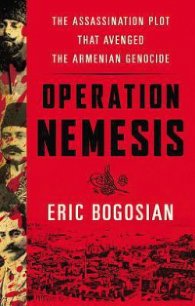The Andromeda Strain - Crichton Michael (книги полностью бесплатно txt) 📗
One was the so-called exotoxin, which destroyed skin and dissolved red cells. Another was a coagulase, which coated the bacteria with protein to inhibit destruction by white cells.
So it was possible that bacteria could alter blood. And it could do it many different ways: strep produced an enzyme, streptokinase, that dissolved coagulated plasma. Clostridia and pneumococci produced a variety of hemolysins that destroyed red cells. Malaria and amebae also destroyed red cells, by digesting them as food. Other parasites did the same thing.
So it was possible.
But it didn't help them in finding out how the Scoop organism worked.
Burton tried to recall the sequence for blood clotting. He remembered that it operated like a kind of waterfall: one enzyme was set off, and activated, which acted on a second enzyme, which acted on a third; the third on a fourth; and so on, down through twelve or thirteen steps, until finally blood clotted.
And vaguely he remembered the rest, the details: all the intermediate steps, the necessary enzymes, the metals, ions, local factors. It was horribly complex.
He shook his head and tried to sleep.
Leavitt, the clinical microbiologist, was thinking through the steps in isolation and identification of the causative organism. He had been over it before; he was one of die original founders of the group, one of the men who developed the Life Analysis Protocol. But now, on the verge of putting that plan into effect, he had doubts.
Two years before, sitting around after lunch, talking speculatively, it had all seemed wonderful. It had been an amusing intellectual game then, a kind of abstract test of wits. But now, faced with a real agent that caused real and bizarre death, he wondered whether all their plans would prove to be so effective and so complete as they once thought.
The first steps were simple enough. They would examine the capsule minutely and culture everything onto growth media. They would be hoping like hell to come up with an organism that they could work with, experiment on, and identify.
And after that, attempt to find out how it attacked. There was already the suggestion that it killed by clotting the blood; if that turned out to be the case, they had a good start, but if not, they might waste valuable time following it up.
The example of cholera came to mind. For centuries, men had known that cholera was a fatal disease, and that it caused severe diarrhea, sometimes producing as much as thirty quarts of fluid a day. Men knew this, but they somehow assumed that the lethal effects of the disease were unrelated to the diarrhea; they searched for something else: an antidote, a drug, a way to kill the organism. It was not until modern times that cholera was recognized as a disease that killed through dehydration primarily; if you could replace a victim's water losses rapidly, he would survive the infection without other drugs or treatment.
Cure the symptoms, cure the disease.
But Leavitt wondered about the Scoop organism. Could they cure the disease by treating the blood clotting? Or was the clotting secondary to some more serious, disorder?
There was also another concern, a nagging fear that had bothered him since the earliest planning stages of Wildfire. In those early meetings, Leavitt had argued that the Wildfire team might be committing extraterrestrial murder.
Leavitt had pointed out that all men, no matter how scientifically objective, had several built-in biases when discussing life. One was the assumption that complex life was larger than simple life. It was certainly true on the earth. As organisms became more intelligent, they grew larger, passing from the single-celled stage to multicellular creatures, and then to larger animals with differentiated cells working in groups called organs. On earth, the trend had been toward larger and more complex animals.
But this might not be true elsewhere in the universe. In other places, life might progress in the opposite direction- toward smaller and smaller forms. Just as modern human technology had learned to make things smaller, perhaps highly advanced evolutionary pressures led to smaller life forms. There were distinct advantages to smaller forms: less consumption of raw materials, cheaper spaceflight, fewer feeding problems…
Perhaps the most intelligent life form on a distant planet was no larger than a flea. Perhaps no larger than a bacterium. In that case, the Wildfire Project might be committed to destroying a highly developed life form, without ever realizing what it was doing.
This concept was not unique to Leavitt. It had been proposed by Merton at Harvard, and by Chalmers at Oxford. Chalmers, a man with a keen sense of humor, had used the example of a man looking down on a microscope slide and see in the bacteria formed into the words "Take us to your leader." Everyone thought Chalmers's idea highly amusing.
Yet Leavitt could not get it out of his mind. Because it just might turn out to be true.
Before he fell asleep, Stone thought about the conference coming up. And the business of the meteorite. He wondered what Nagy would say, or Karp, if they knew about the meteorite.
Probably, he thought, it would drive them insane. Probably it will drive us all insane.
And then he slept.
Delta sector was the designation of three rooms on Level I that contained all communications facilities for the Wildfire installation. All intercom and visual circuits between levels were routed through there, as were cables for telephone and teletype from the outside. The trunk lines to the library and the central storage unit were also regulated by delta sector.
In essence it functioned as a giant switchboard, fully computerized. The three rooms of delta sector were quiet; all that could be heard was the soft hum of spinning tape drums and the muted clicking of relays. Only one person worked here, a single man sitting at a console, surrounded by the blinking lights of the computer.
There was no real reason for the man to be there; he performed no necessary function. The computers were self-regulating, constructed to run check patterns through their circuits every twelve minutes; the computers shut down automatically if there was an abnormal reading.
According to protocol, the man was required to monitor MCN communications, which were signaled by the ringing of a bell on the teleprinter. When the bell rang, he notified the five level command centers that the transmission was received. He was also required to report any computer dysfunction to Level I command, should that unlikely event occur.



